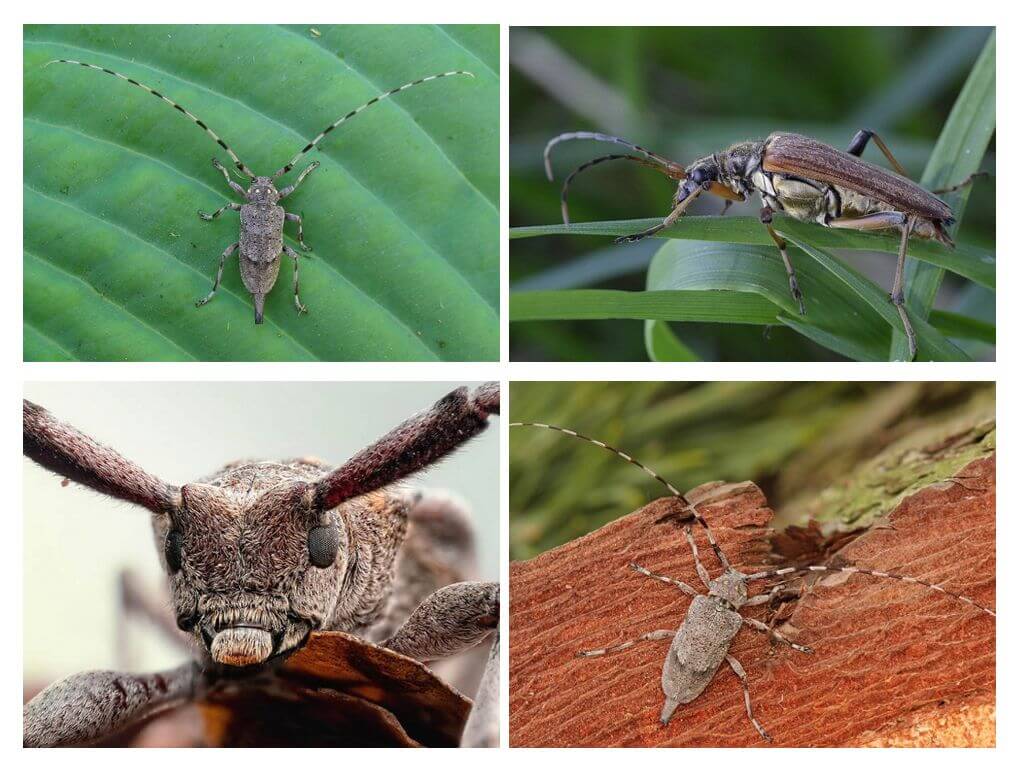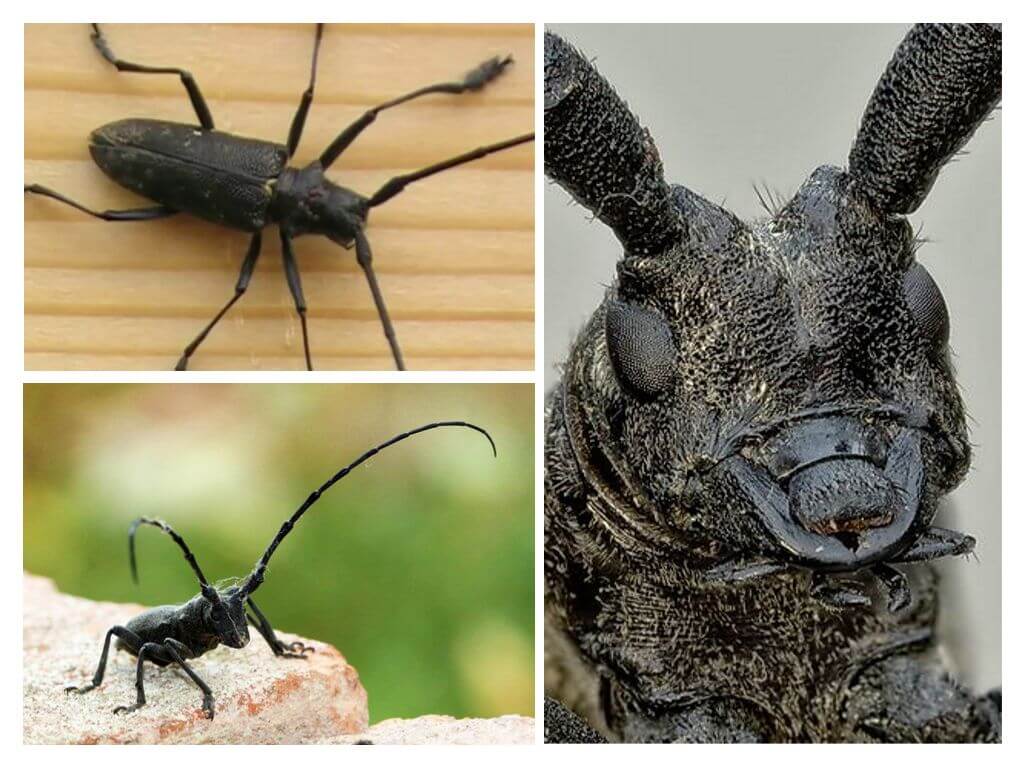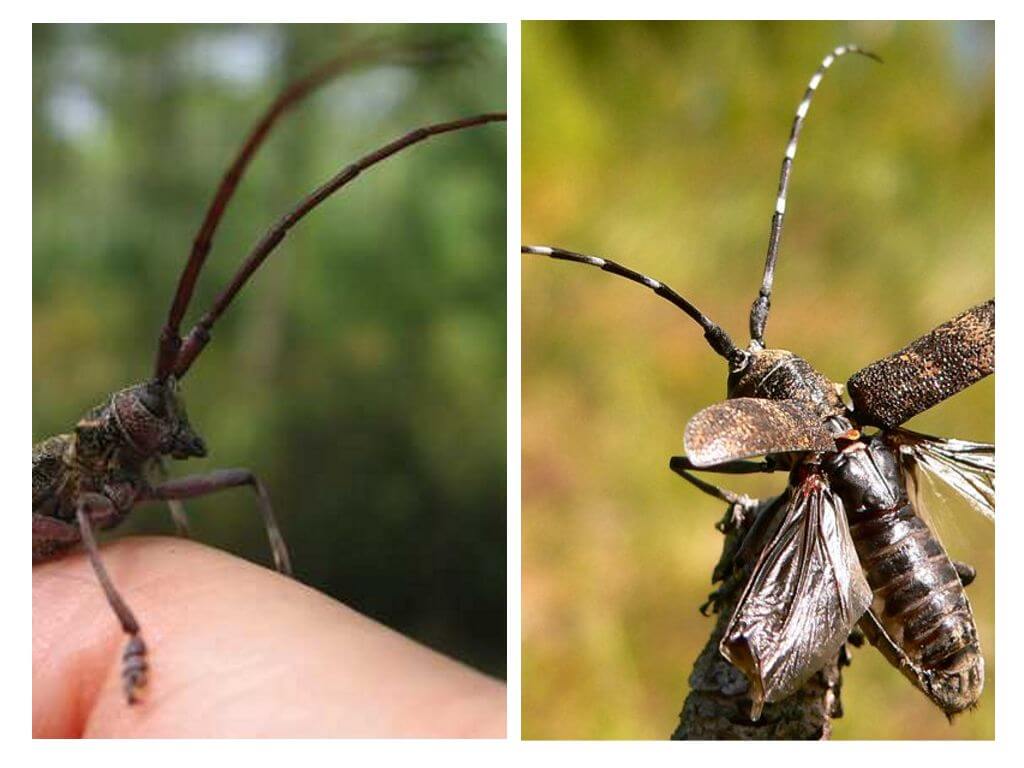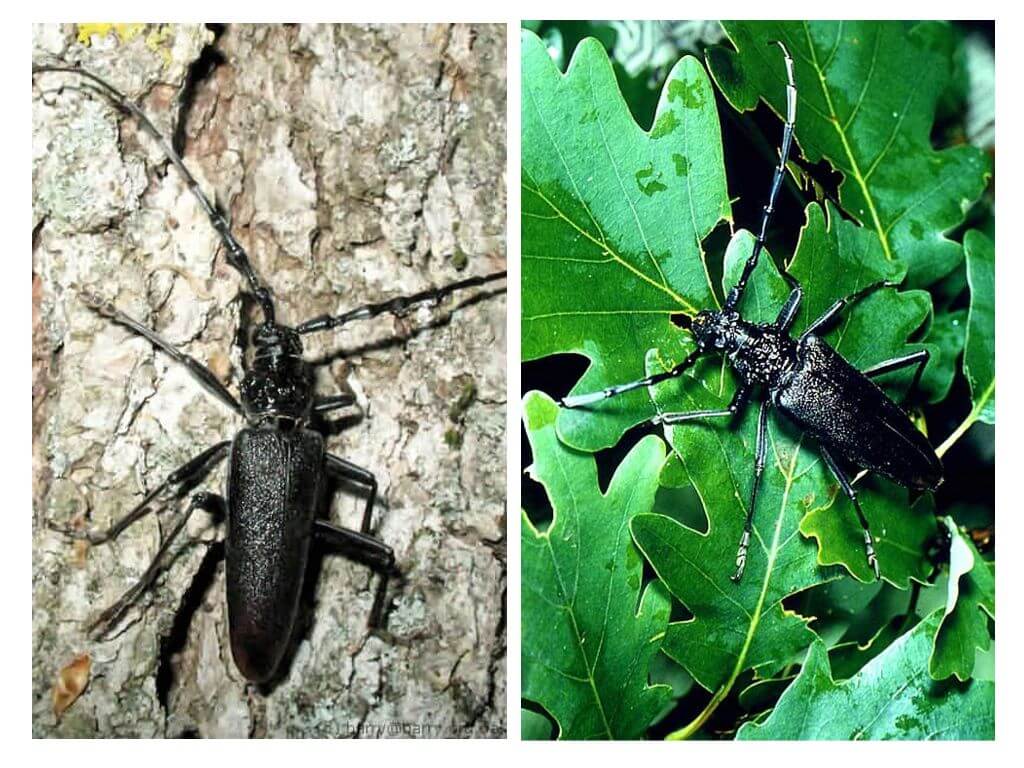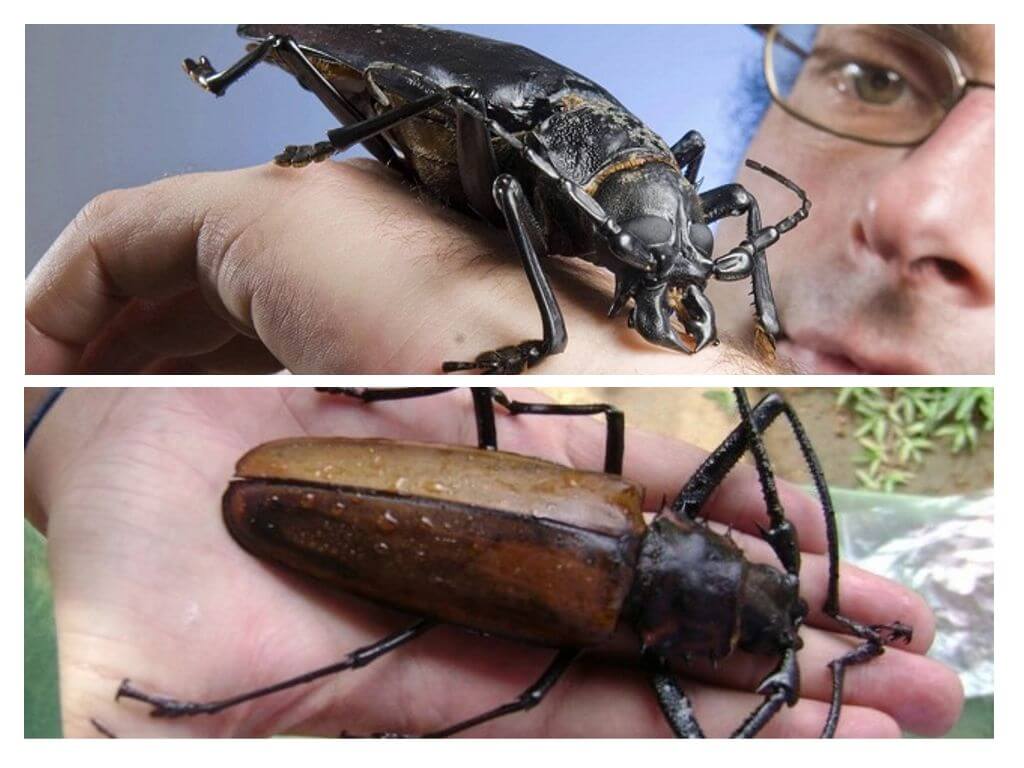On a note!
This long-winged coleoptera does not cause harm to humans, since it does not apply to wood pests. After all, a long-mustached gray barbel settles and damages only deadwood and rotting trees. This in turn helps to accelerate the conversion of wood into humus.
It does not harm the felled wood either, since it only affects the space under the bark. A gray barbel fills it with sawdust, which makes it impossible for other insects to settle in the wood and damage it.
Description
Long-beetled gray beetle beetle is a flat, light gray colored insect, the length of which does not exceed 2 cm. The grain surface of the elytra has two narrow dark bandages. Because of them, the female has a long ovipositor. The mustache of the insect is much longer than the size of the body: in females 1.5 times, in males 4-5 times. They have a hair coat that has a white-gray color. There are 4 dark spots on the pronotum.
Breeding
A long-mustached gray barbel mates usually from May to August. After that, in dying or already dead trees, females lay light yellow elongated eggs.
On a note!
One female is able to lay up to fifty eggs.
After a while, legless, slightly flattened larvae appear from them, the length of which reaches 3.5 cm. All their life they are busy with eating the cambial part of the cortex, laying winding paths in it.
When the development of the larva ends, it deepens into the woody layers, where at the end of the hooked course it turns into a pupa. The development process takes from 1 to 2 years. The emergence of adults occurs since the beginning of spring, takes all summer and captures September.
Who is afraid of the barbel bug
The natural enemies of this representative of the beetles are not only birds. They also include predatory and parasitic insects, sometimes even microorganisms.
